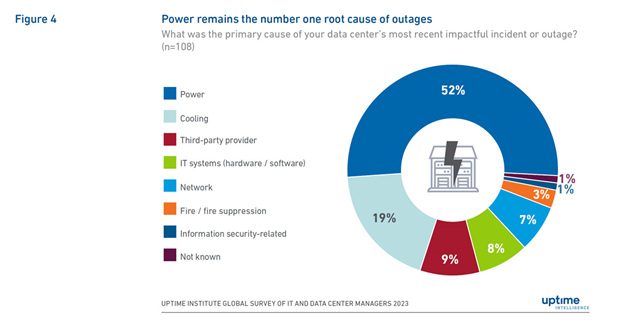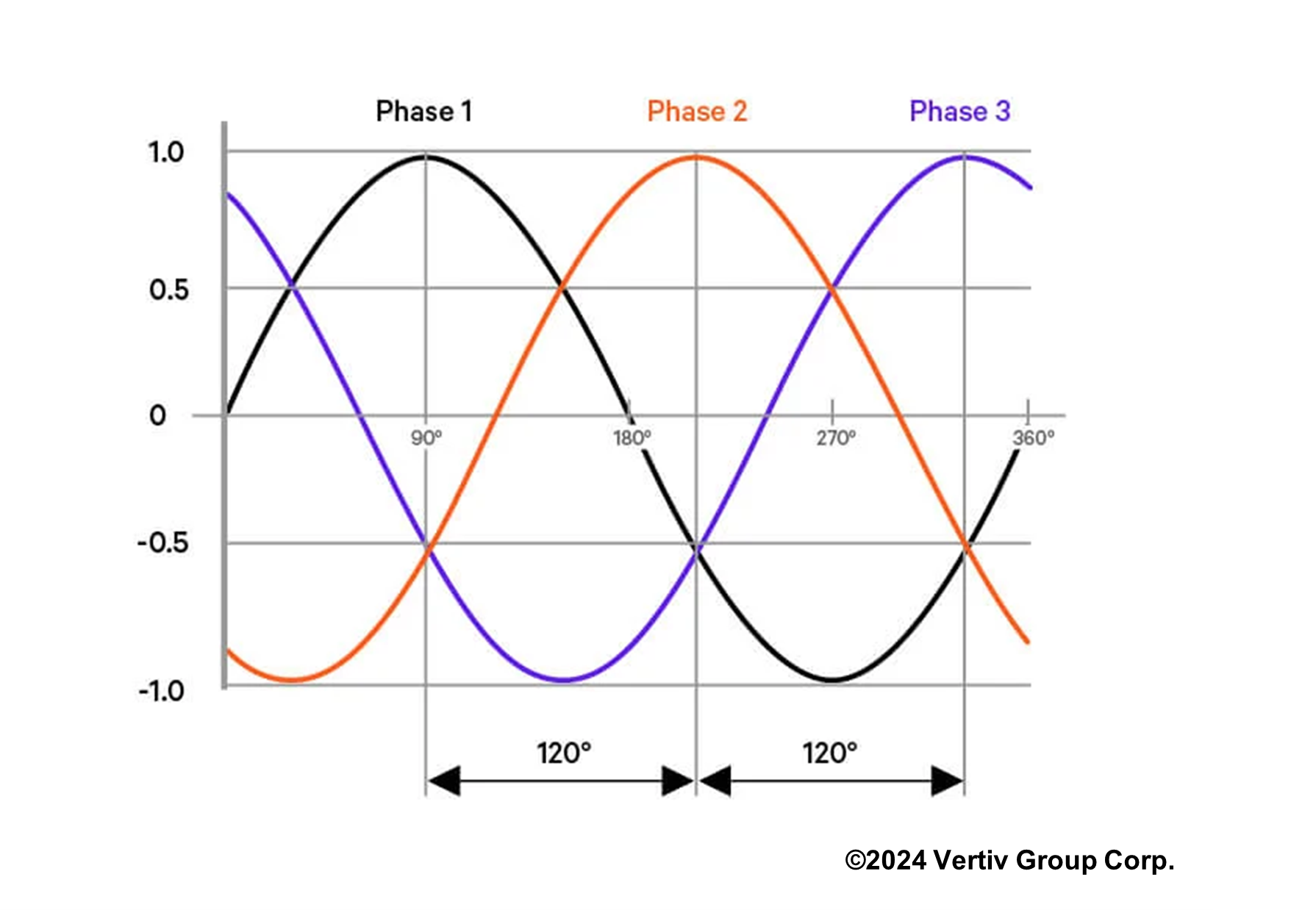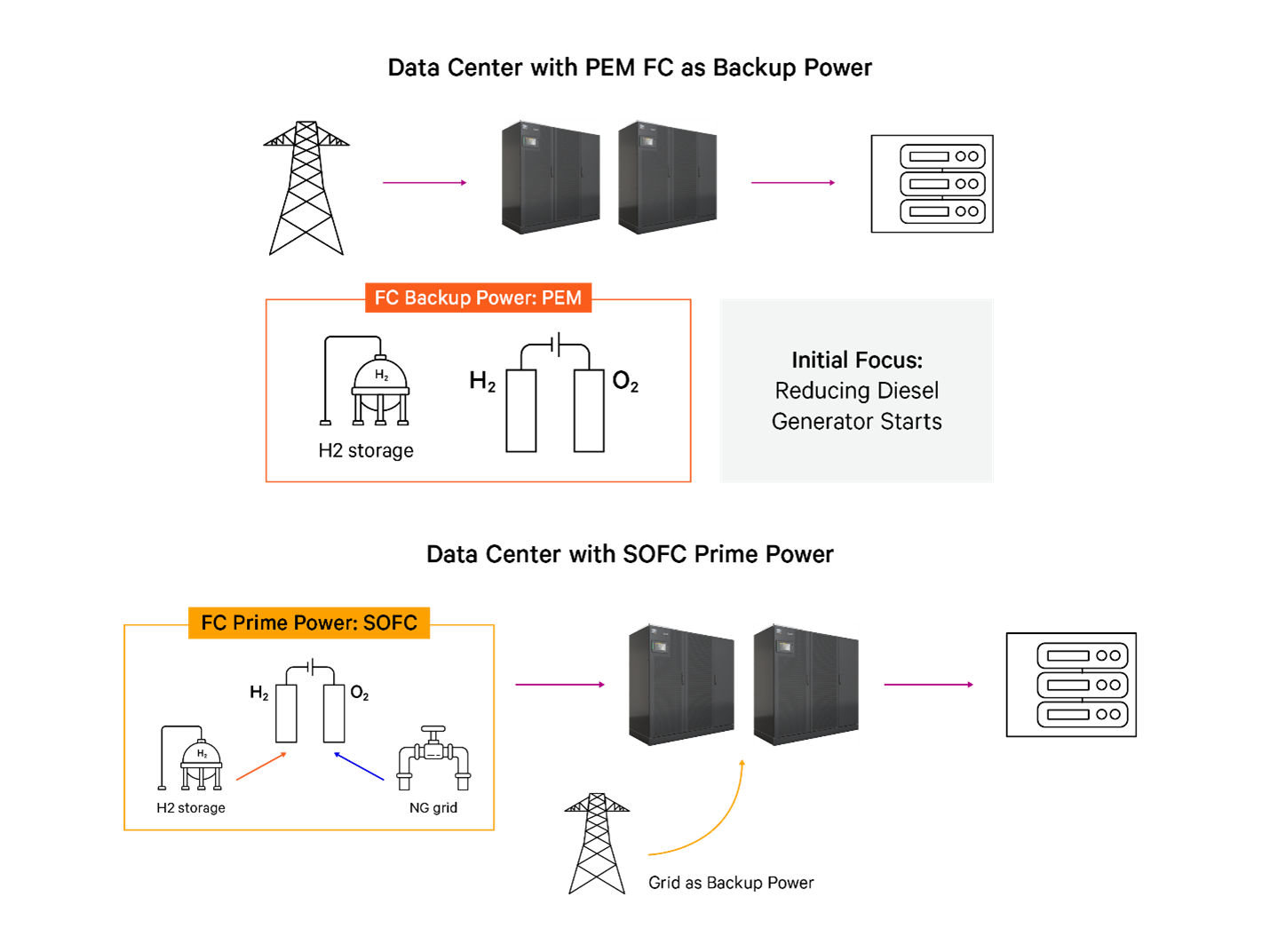As data centers increase rack densities to meet the demand for high-performance computing (HPC) growth, the already unstable grid struggles even more to handle the additional load. Uptime Institute's 2024 Outage Analysis shows that the outage rates are still a critical concern despite getting fewer and less severe compared to recent years. Power remains the leading cause of incidents, affecting sectors like finance and healthcare. In 2023, 54% of survey respondents reported major interruptions costing over $100,000 and 16% exceeding $1 million.

Figure 1. According to the Uptime Institute Global Survey of IT and Data Center Managers 2023, 52% of 108 respondents report that power remains the primary root cause of outages.
The positive trend is that organizations are investing more in physical infrastructure redundancy, which has contributed to the reduction in outages. Strategic investment in high-density backup power is crucial for operational stability and resilience, especially as demand for high-performance computing grows. These solutions ensure continuous power, support advanced cooling for Artificial Intelligence (AI) workloads, reduce grid instability risks, and protect against operational disruptions and potential losses.
Understanding high-density backup power
As data centers evolve into high-density environments with advanced computing and AI applications, traditional backup power solutions alone may not suffice. High-density backup systems are designed to provide reliable and responsive power support for these demanding workloads.
High-density backup power systems offer reliable energy storage and quick power delivery during outages, ensuring a stable power supply even during peak demand. These solutions enable data centers to manage intensive computational tasks and maintain operational continuity with minimal risk of downtime or performance degradation.
Uninterruptible power supply: The foundation of reliable, high-density backup power
Uninterruptible power supply (UPS) systems stabilize power by activating during outages and protecting against power fluctuations. Maintaining seamless operational continuity even during power outages, these solutions prevent data loss and hardware damage.
What are the different types of UPS?
UPS systems come in three main varieties. Each type provides unique benefits tailored to meet the specific needs of a data center environment.
Standby UPS
The standby UPS, or offline UPS, offers basic power protection. It remains idle until a power failure is detected, at which point it switches to battery power. This type suits smaller, less critical applications where momentary power interruption is acceptable during the switch.
Line-interactive UPS
Line-interactive UPS systems systems offer more advanced protection by correcting minor power fluctuations without switching to a battery. This approach improves efficiency and prolongs battery life, making it a good choice for medium-sized applications that require better voltage regulation.
Online double conversion UPS
The double conversion UPS provides the highest level of protection by continuously converting incoming AC power to DC and then back to AC. This process eliminates all power quality issues, including outages, sags, surges, and noise. Because it provides an uninterrupted power supply, it is ideally suited for high-density battery backup applications where even a short interruption cannot be tolerated.
Advanced UPS technologies for high-density workloads
Expansion into advanced UPS features to meet specific data center needs is essential given the rapid technological acceleration. Leading UPS systems now come equipped with features designed to optimize efficiency and enhance reliability. They provide scalable solutions tailored to the unique demands of high-density computing environments.
Three-phase UPS
Three phase power UPS systems enhance power distribution by evenly managing electrical loads, ensuring consistent power supply and reducing downtime. Vertiv's advanced three-phase UPSs can neutralize load harmonics with inverter control algorithms essential for supporting continuous, high-density computing, optimizing energy use, and improving efficiency. Advanced UPS systems also enhance power quality, ensuring cleaner and more reliable power for AI-driven operations.

Figure 2. Three-phase AC power systems, where phase 1 reaches its positive peak, phases 2 and 3 are simultaneously at -0.5. This configuration ensures that, unlike in single-phase current systems, there is never a moment when power delivery to the load ceases. In fact, across six distinct points in each phase cycle, one of the lines will be at its maximum positive or negative value.
Modular UPS systems
In addition to three-phase power, modular UPS systems offer significant flexibility. These solutions allow for incremental additions of power modules within the same UPS framework, enabling data centers to scale power protection with minimal downtime. This capability enhances overall system efficiency and redundancy while minimizing initial capital outlay, making it more manageable for data centers to adapt to growing demands.
Optimizing modular UPS systems with distributed battery configuration
Distributed battery setups are crucial for high-density data centers, providing continuous power and improving the reliability of modular UPS systems. By allocating battery resources across multiple independent modules, these setups create a resilient fail-safe mechanism, isolating faults to prevent widespread system failures. This ensures the overall system continues operating efficiently even if a component fails, reducing the risk of downtime and preventing data loss or service disruptions in critical infrastructure environments.
Read more:
Enhancing UPS reliability with the advantages of distributed battery systems

Explore the pivotal role of distributed battery systems in revolutionizing modular UPS systems for unmatched reliability and efficiency in our latest white paper.
UPS lithium-ion batteries
Lithium-ion UPS batteries offer superior power storage capacity, allowing for more efficient backup energy in data centers with limited rooms and enhancing operational equipment space. They offer a longer lifespan and rapid charging capabilities, minimizing downtime between power outages. Their integration into UPS systems supports reliable, uninterrupted power crucial for high-density data center operations.
Eco-mode operation
Moreover, a notable feature in many advanced UPS systems is eco-mode operation, which balances power protection with energy efficiency. By bypassing electrical conversion processes under normal conditions, these systems reduce energy losses. During power irregularities, the UPS quickly reverts to active power conditioning to protect critical loads, contributing to sustainability without sacrificing reliability.
Grid-interactive capabilities
Finally, grid-interactive capabilities enable UPS systems to efficiently handle high-density workloads by actively managing power supply and demand. While providing backup power, these systems interact with the grid to regulate electrical distribution. Integrating with energy storage technologies like battery energy storage systems (BESS), they efficiently manage power requirements, especially for AI applications.
Fast frequency reserve (FFR)
UPS with grid interactive capabilities can provide grid services such as fast frequency response (FFR) by ensuring at the same time uninterrupted power supply during outages or periods of high electricity demand. This ensures stable operation and uninterrupted service, especially critical for data centers handling intensive AI workloads.
Demand management
Advanced UPS systems offer demand management or peak shaving functions, reducing power consumption from the grid during high demand periods and alleviating strain. During these peak times, the UPS switches to BESS as an additional distributed energy resource (DER), leveraging the stored energy to support high-density workloads and prevent power interruptions or fluctuations. Combining BESS with the UPS prevents overloads, ensuring operational excellence and grid independence.
Online double conversion UPS: Peak efficiency and protection for high-density power
An online, modular UPS, equipped with advanced technologies, is an optimal solution for high-density data center environments. Its continuous power conversion process enables a steady and reliable power supply without interruption. This UPS configuration can eliminate power quality issues such as outages, voltage sags, surges, and harmonic distortions, which are critical in maintaining the integrity of sensitive equipment in high-density computing settings.
These UPS systems can offer scalability due to their modular design, enabling data centers to adjust power protection as they grow, with minimal major downtime or investment. For reliable and efficient power protection, the double conversion UPS with the latest tech can be a dependable solution.
Diverse technologies for high-density backup power
Uninterruptible power supplies are pivotal in ensuring uninterrupted power. Several additional technologies have been developed to enhance the efficacy of these systems, especially in scenarios requiring high-density backup power. Each brings its own set of specialized advantages, complementing the core functionality of UPS systems and offering robust solutions for maintaining power continuity.
Flywheel energy storage
Flywheel energy storage systems can offer an advanced option for UPS systems, delivering immediate power response to fluctuations with a lower wear-and-tear rate than conventional batteries.
- Providing instant energy.
- Flawlessly bridging the gap until backup generators activate.
- Ensuring uninterrupted power in data centers.
Flywheels can require minimal maintenance and be long-lasting, increasing reliability and operational efficiency in the data center energy solution.
Supercaps
Supercapacitors, also known as ultracapacitors, are high-capacity energy storage devices that operate by accumulating electric charge on porous electrodes. They provide rapid charging and discharging capabilities and feature reliable cycle life, making them ideal for applications requiring frequent power fluctuations. Some equipment for HPC workloads has built-in supercapacitors for short-term power backup during outages.
Generator systems
Generator systems or standby generators are used for emergency energy supply, traditionally converting fuel into electrical power through combustion. In high-density areas where power outages can lead to severe consequences, they offer energy supply to keep operations running during utility power failures as long as fuel is available. This setup is especially common in data centers (see Figure 3).

Figure 3: Diagram illustrating the power system in data centers today utilizing diesel generators.
A growing trend in data center operations is to minimize diesel generator starts and usage. This initiative aims to reduce the company's carbon footprint and address the high costs and environmental impact of Scope 1 emissions. Data centers are focusing on reducing fossil fuel dependence and enhancing efficiency to meet environmental and financial objectives. By leveraging technological innovations such as hydrogen fuel cells, the strategy ensures a reliable power supply while promoting environmental responsibility.
Fuel cells
Fuel cells chemically convert energy into electricity efficiently and reliably, making them ideal for high-density data centers that require continuous power for operational reliability. Among the different types, proton-exchange membrane (PEM) fuel cells use hydrogen as their fuel source and feature a solid polymer electrolyte, while solid oxide fuel cells (SOFCs) use a ceramic compound and operate at much higher temperatures.

Figure 4: Phases 2 and 3 are short-to-medium-term goals for data centers' energy independence reducing diesel generators' starts from the microgrid facility and replacing them with PEM and SOFC fuel cells as backup and prime power sources, respectively.
Capable of exceeding 60 percent energy efficiency, fuel cells surpass diesel generators, which are only 30 percent efficient. When hydrogen is used, the only byproducts are water and heat, aligning with decarbonization goals. Data centers may further utilize fuel cells to phase out standby generators (see Figure 4) and reduce carbon emissions, supporting the industry's decarbonization goals.
Read more:
Evaluating the potential of fuel cells for data center power

Capacity growth has become a constant challenge for the data center industry and that growth threatens to drive up greenhouse gas emissions, contributing to climate change. But there is an opportunity within many facilities to reduce emissions.
Battery energy storage system (BESS)
A BESS stores electricity when supply exceeds demand and releases it during peak times or outages, which is crucial for high-density data centers. It offers a quick response to power shortages, enhancing stability and reliability in energy supply, reducing downtime, and improving energy efficiency.

Figure 5. A dynamic or hybrid power energy ecosystem integrated with BESS, designed for storing backup power for later use and reducing a data center's vulnerability to an unstable grid.
Data centers may leverage BESS to promote uptime when using renewable energy sources like solar and wind power, setting the stage for achieving carbon savings and promoting grid independence. Integrating BESS with UPS systems provides a comprehensive power solution for high-performance computing workloads that require consistent, reliable, and cost-efficient backup power.
Read more:
On the radar: Vertiv provides microgrid and BESS to data centers

Unlock unparalleled scalability and efficiency in data center operations with insights from Omdia's report on BESS technology's transformative impact on infrastructure modernization and environmental footprint reduction.
Design considerations for high-density backup power
Implementing high-density backup power systems involves thorough planning and strategy. IT and facility teams take into account several factors for optimal design and implementation of these systems:
- Capacity planning: Determining the appropriate system capacity requires a nuanced understanding of current and future power needs, considering peak demands and growth projections.
- Redundancy configurations: Building redundancy helps to reduce the risk of a single point of failure affecting the entire system, potentially providing more continuous operation and improving overall reliability. Configurations such as N+1, N+2, or 2N offer varying levels of failover protection.
- Cooling and ventilation: Generating significant heat, high-density systems require effective cooling solutions to maintain operational integrity and prolong system life.
- Space efficiency: Optimizing the layout and integration of backup power systems is paramount with the premium on physical space.
- Maintenance and monitoring: Ensuring the reliability of high-density backup power requires regular maintenance and vigilant monitoring. This includes routine inspections, performing load tests, and monitoring system performance to prevent failures. Proper care guarantees optimal functionality and extends the lifespan of backup power systems.
Unlock uninterrupted power excellence
Transform your power infrastructure to meet the specific demands of AI applications. Ensure uninterrupted operation of your critical systems with robust backup power solutions designed to handle high computational loads and provide seamless transition during power outages.
Vertiv products for high-density backup power:


